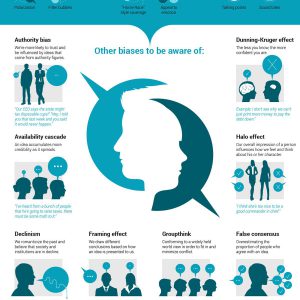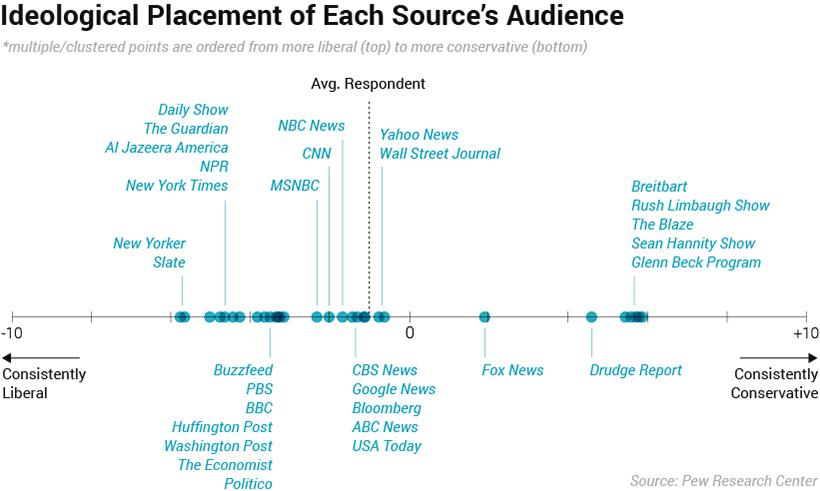Feature your business, services, products, events & news. Submit Website.
Breaking Top Featured Content:
11 Cognitive Biases That Influence Political Outcomes

Tyler Durden
Mon, 06/08/2020 – 23:05
With the 2020 U.S. presidential election fast approaching, many people will be glued to the 24-hour news cycle to stay up to date on political developments. Yet, as Visual Capitalist’s Marcus Lu details below, when searching for facts, our own cognitive biases often get in the way.
If this isn’t problematic enough, third parties can also take advantage of these biases to influence our thinking. The media, for example, can exploit our tendency to assign stereotypes to others by only providing catchy, surface-level information. Once established in our minds, these generalizations can be tough to shake off.
Such tactics can have a powerful influence on public opinion if applied consistently to a broad audience. To help us avoid these mental pitfalls, today’s infographic from PredictIt lists common cognitive biases that influence the realm of politics, beginning with the “Big Cs”.
The First C: Confirmation Bias
People exhibit confirmation bias when they seek information that only affirms their pre-existing beliefs. This can cause them to become overly rigid in their political opinions, even when presented with conflicting ideas or evidence.
When too many people fall victim to this bias, progress towards solving complex sociopolitical issues is thwarted. That’s because solving these issues in a bipartisan system requires cooperation from both sides of the spectrum.
A reluctance towards establishing a common ground is already widespread in America. According to a 2019 survey, 70% of Democrats believed their party’s leaders should “stand up” to President Trump, even if less gets done in Washington. Conversely, 51% of Republicans believed that Trump should “stand up” to Democrats.
In light of these developments, researchers have conducted studies to determine if the issue of confirmation bias is as prevalent as it seems. In one experiment, participants chose to either support or oppose a given sociopolitical issue. They were then presented with evidence that was conflicting, affirming, or a combination of both.
In all scenarios, participants were most likely to stick with their initial decisions. Of those presented with conflicting evidence, just one in five changed their stance. Furthermore, participants who maintained their initial positions became even more confident in the superiority of their decision—a testament to how influential confirmation bias can be.
The Second C: Coverage Bias
Coverage bias, in the context of politics, is a form of media bias where certain politicians or topics are disproportionately covered. In some cases, media outlets can even twist stories to fit a certain narrative.
For example, research from the University of South Florida analyzed media coverage on President Trump’s 2017 travel ban. It was discovered that primetime media hosts covered the ban through completely different perspectives.
Each host varied drastically in tone, phrasing, and facts of emphasis, […] presenting each issue in a manner that aligns with a specific partisan agenda.
– Josepher, Bryce (2017)
Charting the ideological placement of each source’s audience can help us gain a better understanding of the coverage bias at work. In other words, where do people on the left, middle, and right get their news?
The horizontal axis in this graphic corresponds to the Ideological Consistency Scale, which is composed of 10 questions. For each question, respondents are assigned a “-1” for a liberal response, “+1” for a conservative response, or a “0” for other responses. A summation of these scores places a respondent into one of five categories:
Overcoming coverage bias—which dovetails into other biases like confirmation bias—may require us to follow a wider variety of sources, even those we may not initially agree with.
The Third C: Concision Bias
Concision bias is a type of bias where politicians or the media selectively focus on aspects of information that are easy to get across. In the process, more nuanced and delicate views get omitted from popular discourse.
A common application of concision bias is the use of sound bites, which are short clips that can be taken out of a politician’s speech. When played in isolation, these clips may leave out important context for the audience.
Without the proper context, multi-faceted issues can become extremely polarizing, and may be a reason for the growing partisan divide in America. In fact, there is less overlap in the political values of Republicans and Democrats than ever previously measured.
In 1994, just 64% of Republicans were more conservative than the median Democrat. By 2017, that margin had grown considerably, to 95% of Republicans. The same trend can be found on the other end of the spectrum. Whereas 70% of Democrats were more liberal than the median Republican in 1994, this proportion increased to 97% by 2017.
Overcoming Our Biases
Achieving full self-awareness can be difficult, especially when new biases emerge in our constantly evolving world. So where do we begin?
Simply remembering these mental pitfalls exist can be a great start—after all, we can’t fix what we don’t know. Individuals concerned about the upcoming presidential election may find it useful to focus their attention on the Big Cs, as these biases can play a significant role in shaping political beliefs. Maintaining an open mindset and diversifying the media sources we follow are two tactics that may act as a hedge.
Continue reading at ZeroHedge.com, Click Here.
Press Release Distribution Service


